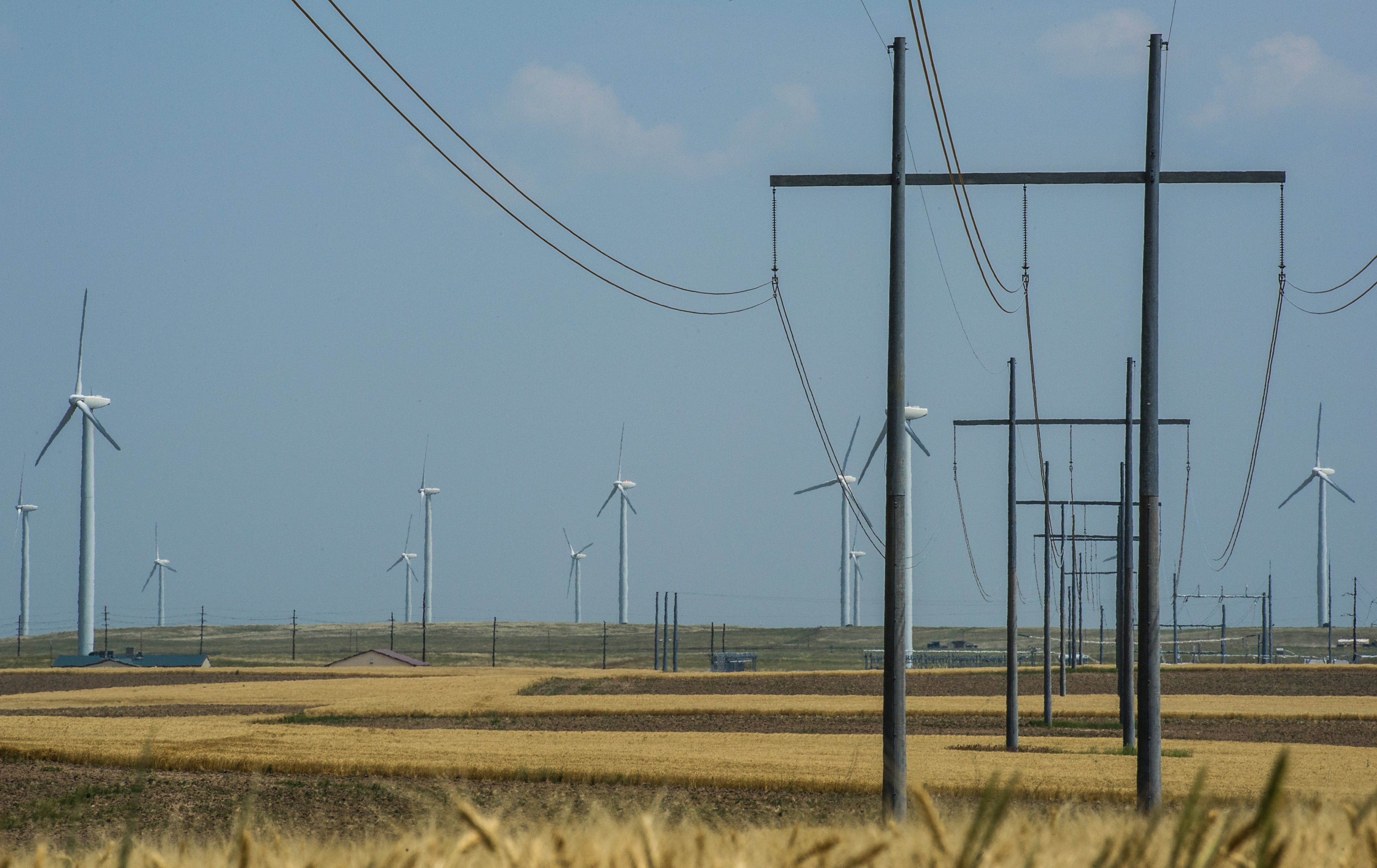Earlier this summer, the Sierra Club and several partners submitted comments to the Federal Energy Regulatory Commission (FERC) related to the commission’s notice of proposed rulemaking concerning reforms to its regional transmission planning and cost allocation requirements. If you’re yawning after that sentence, you’re not alone. Transmission lines–the wires used to move electricity long distances–aren’t the most exciting part of the transition from dirty fossil fuels to clean energy, but they’re one of the most important.
Transmission lines are a key part of the power grid. The grid is a complex system of power generation, transmission, and delivery that makes it possible for energy to get from its source (like a wind farm) to its final destination (your lightswitch or AC unit). The rising economic cost of coal-fired power plants, consumer preferences for cheaper and cleaner energy, and bold investment from Congress and President Biden are changing the way we create and use energy, but the grid that moves all that clean energy has to change too. To electrify everything and realize the full potential of abundant renewable energy, it’s necessary to have a grid that’s well-planned, resilient, and strong enough to handle the massive amounts of clean energy poised to come online in the near future. That’s where FERC comes in.
FERC is an independent agency within the Department of Energy responsible for regulating energy transmission. Under FERC’s current rules, the utilities responsible for planning and building new transmission lines aren’t required to follow any uniform procedures for long-term regional planning, nor are they required to consider the full scope of benefits of competing transmission projects. Right now, FERC is addressing these two issues through a proposed transmission planning rule that is a positive, although incomplete, step toward building a grid that can handle America’s clean energy transition.
The first piece of FERC’s proposed rule addresses the way utilities plan transmission lines. Because FERC’s current rules don’t require long-term planning, utilities are free to only build what makes the most sense for their bottom line rather than what is best for the grid and consumers. Rather than look decades into the future and build projects that are good for the system as a whole, utilities are often scrambling to address today’s energy problems with “just-in-time” plans that are actually years late. These projects are great for utility shareholders, but are insufficient for building the grid we need to enable a clean energy transition. In FERC’s proposed rule, the agency would recommend utilities’ plans for regional transmission projects look at least 20 years into the future and be updated every three years. As more clean energy projects come online and energy storage becomes even more important, transmission lines must keep pace, and this piece of the rule helps create transmission infrastructure capable of growing with our changing energy demands. We believe the commission should make this kind of long-term planning mandatory.
The second piece of this rule recommends utilities zoom out and take a broader look at the full impacts of energy projects. This step is desperately needed to address the longstanding inequities in the planning and distribution of energy that contributes to deadly and unequally dispersed blackouts and higher energy burdens for Black and Brown communities. FERC’s proposed rule would have transmission planners focus on the “public policy benefits” as they weigh various transmission projects. These public policy benefits are tied to various state-level energy policies, and often include emissions reductions plans. But utilities wouldn’t be required to consider the many other benefits we know clean energy can bring, like lower costs, reduced risk of blackouts, and greater resilience in extreme weather in conjunction with public policy benefits. Without considering the full range of benefits for various projects, utilities’ smaller, cheaper, and less efficient projects often seem more economically attractive than they really are. Meanwhile, bigger, bolder, greener projects are passed over because their full benefits over time aren’t considered.
FERC’s proposed rule nudges utilities in the right direction and, if implemented, would lead to slightly better transmission projects. But we need far more than “slightly better” if we want to stave off the worst impacts of the climate crisis or even ensure no person’s food and medication spoils because of an energy blackout in the middle of a heatwave.
Utilities have proven time and time again that their pledges to improve mean little and they need to be held accountable for any promises made. Without stricter requirements than the ones FERC has proposed, this rule could become little more than a paperwork exercise. To make this rule stronger and ensure it takes a meaningful step toward improving our power grid, FERC should require a minimum set of mandatory benefits that must be considered in planning regions, as well as a baseline set of factors/inputs that must be included in long-term scenarios.
